
M5.7 earthquake shakes Hawaii
A large event in a deep, long-lived seismic swarm.
Citation: Hubbard, J. and Bradley, K., 2024. M5.7 earthquake shakes Hawaii. Earthquake Insights, https://doi.org/10.62481/d846ea76
A magnitude 5.7 earthquake struck below the southeastern coast of Hawaii on February 9, 2024 at 10:06 AM (20:06 UTC). The earthquake was felt across the entire island chain, with maximum intensities of V-VI (moderate to strong). Fortunately, because the earthquake occurred relatively deep in an area with low population density, this stronger shaking was not felt by many; the more distant big cities mostly experienced only weak to light shaking.
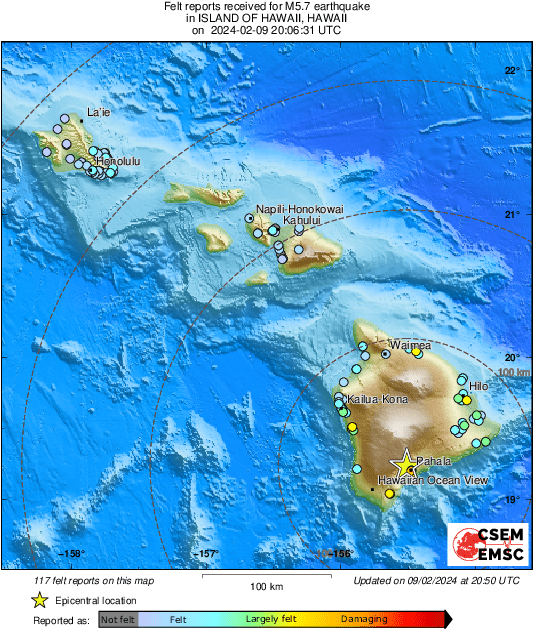
Hawaii is no stranger to earthquakes - the island only exists because it is an active volcano sitting above a mantle hotspot. However, the recent earthquake is striking, because the location where it occurred has been producing an earthquake swarm that started expanding in 2015. Actually, swarms are also not unusual in Hawaii - in fact, there has been an ongoing shallow swarm that became very noisy at the end of January, associated with shallow magma movement - this particular swarm is located much deeper, at 30-40 km depth (yellow on the plots below, rather than the more typical reds).
Swarms are very present in our mind right now, because the damaging M7.5 earthquake on January 1st in Japan was preceded by an intensifying swarm. This is not typical behavior - the majority of earthquakes occur without precursory seismicity, and most swarms are not associated with large earthquakes. Or course, the earthquakes in swarms are often very small, so there may be swarms occurring that we don’t know about, in areas without good seismic networks.
There has been debate about the cause of the swarm in Japan; magma or fluids have been proposed. Shinji Toda and Ross Stein noted after the earthquake in Japan that large earthquakes may be more likely during some swarms simply because the rate of all earthquakes goes up.
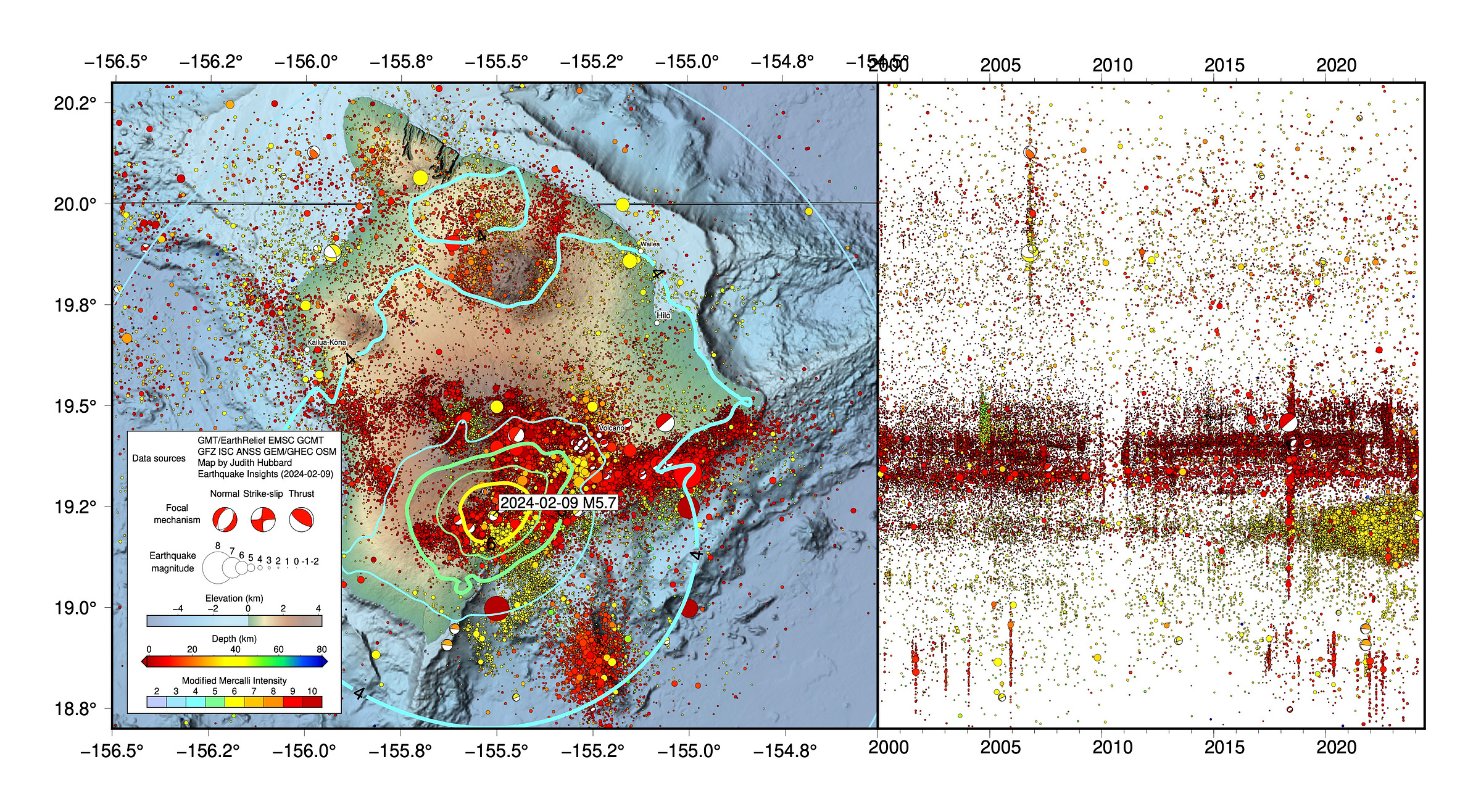
A cross-section across the deep swarm beneath Hawaii (in the following figure) demonstrates just how disconnected it is from that shallow activity. That deep blob of yellow represents a long-lived surge of seismicity in the upper mantle. What’s going on?
To see the swarm more clearly, let’s strip off the shallower earthquakes. The plot below shows only events below 25 km, with the color stretch adjusted to highlight more detail.
The recent M5.7 occurred near the northwestern edge of the swarm, and is the largest event by far - although there was a slightly shallower M5.5 to the east in 1994. The swarm itself. highlights a rectangular area ~10 km x 20 km.
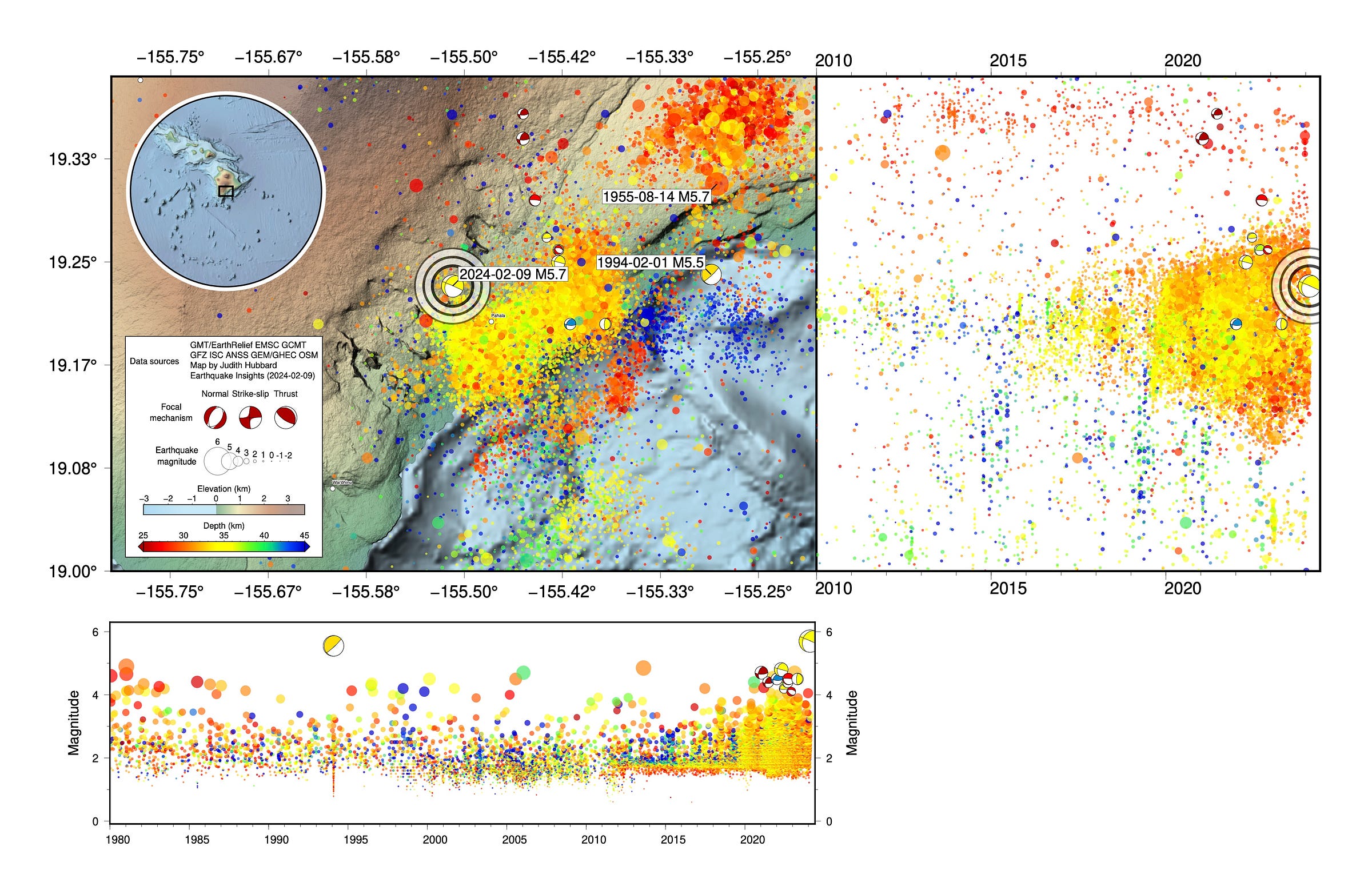
We actually commented on this seismicity back in 2021 on Twitter, so it’s interesting to revisit it now!
Since that post in 2021, some slightly shallower events have occurred to the southeast, visible in slightly redder tones on the map and as a secondary, smaller blob on the cross-section above.
So, what’s going on? Well, back in 2021, Anthony Lomax posted a 3D model of the swarm seismicity with incredible resolution. He described the seismicity as a “nebula of filaments.” Check it out for yourself!
That magma surge was also documented in a paper published in 2021 by Matthew Burgess and Diana C. Roman. They suggest that this seismicity - in a region they name the Pāhala Mantle Fault Zone - is occurring because of an increase in magma intruding below the island (called a Mantle Surge - a good band name?). They also note that there has been a change in stresses across the region, which they infer to be driven by the intrusion.
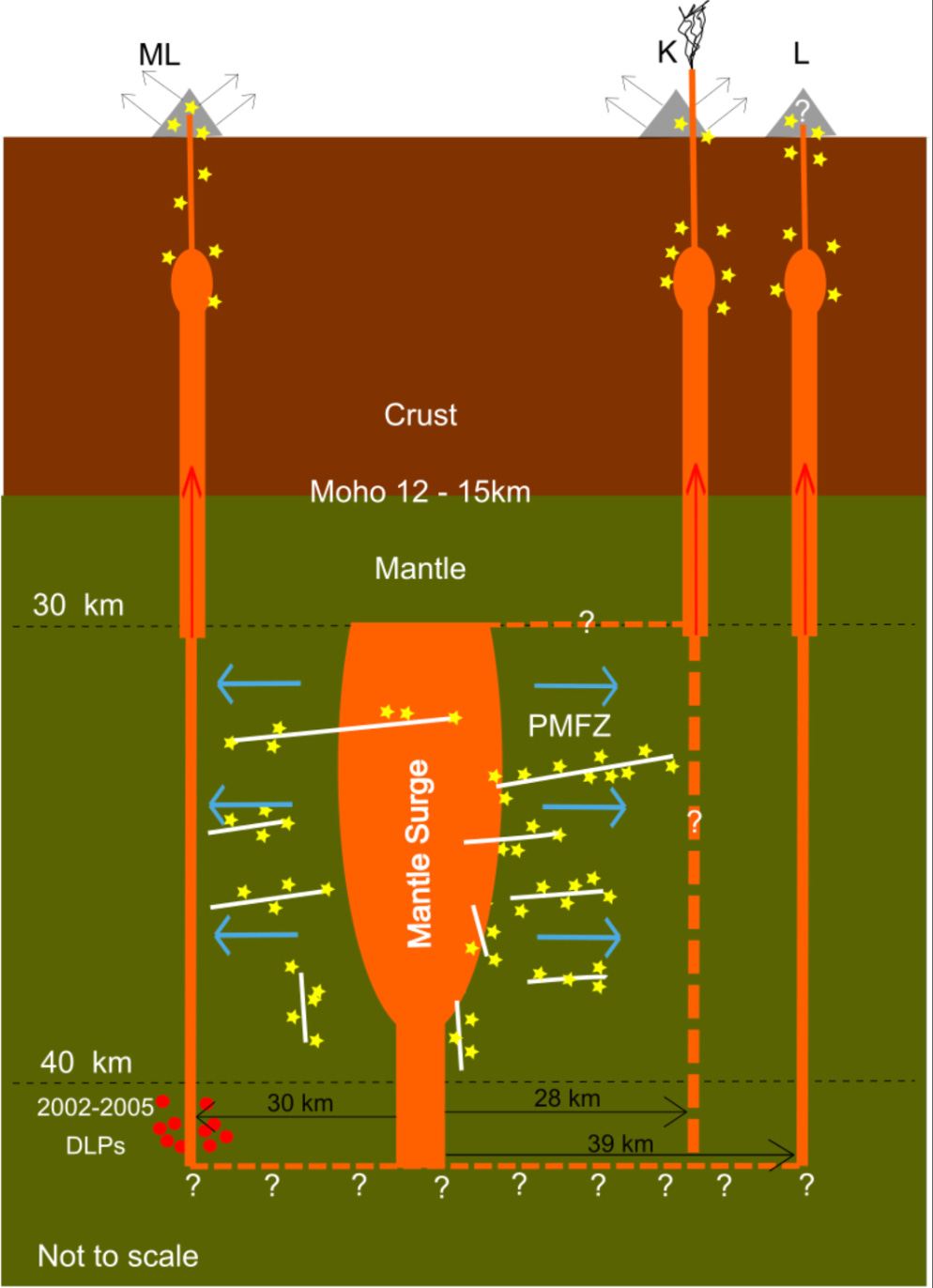
In fact, the authors note that there are apparent correlations between this seismicity and nearby volcanic unrest, suggesting that these systems are linked. Similar correlations were observed in 1983 - only time will tell how the present swarms evolve.
References:
Burgess, M.K. and Roman, D.C., 2021. Ongoing (2015‐) Magma Surge in the Upper Mantle Beneath the Island of Hawaiʻi. Geophysical Research Letters, 48(7), p.e2020GL091096. https://doi.org/10.1029/2020GL091096
Lomax, A., 2021. https://twitter.com/ALomaxNet/status/1445450708556214281
Toda, S., and Stein, R. S., 2024. Intense seismic swarm punctuated by a magnitude 7.5 Japan shock. Temblor, http://doi.org/10.32858/temblor.333

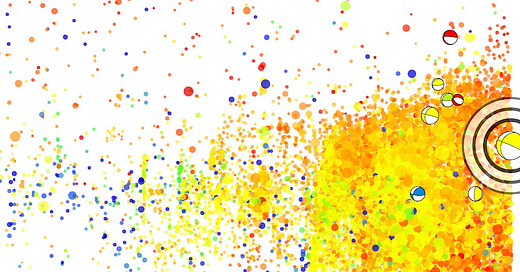



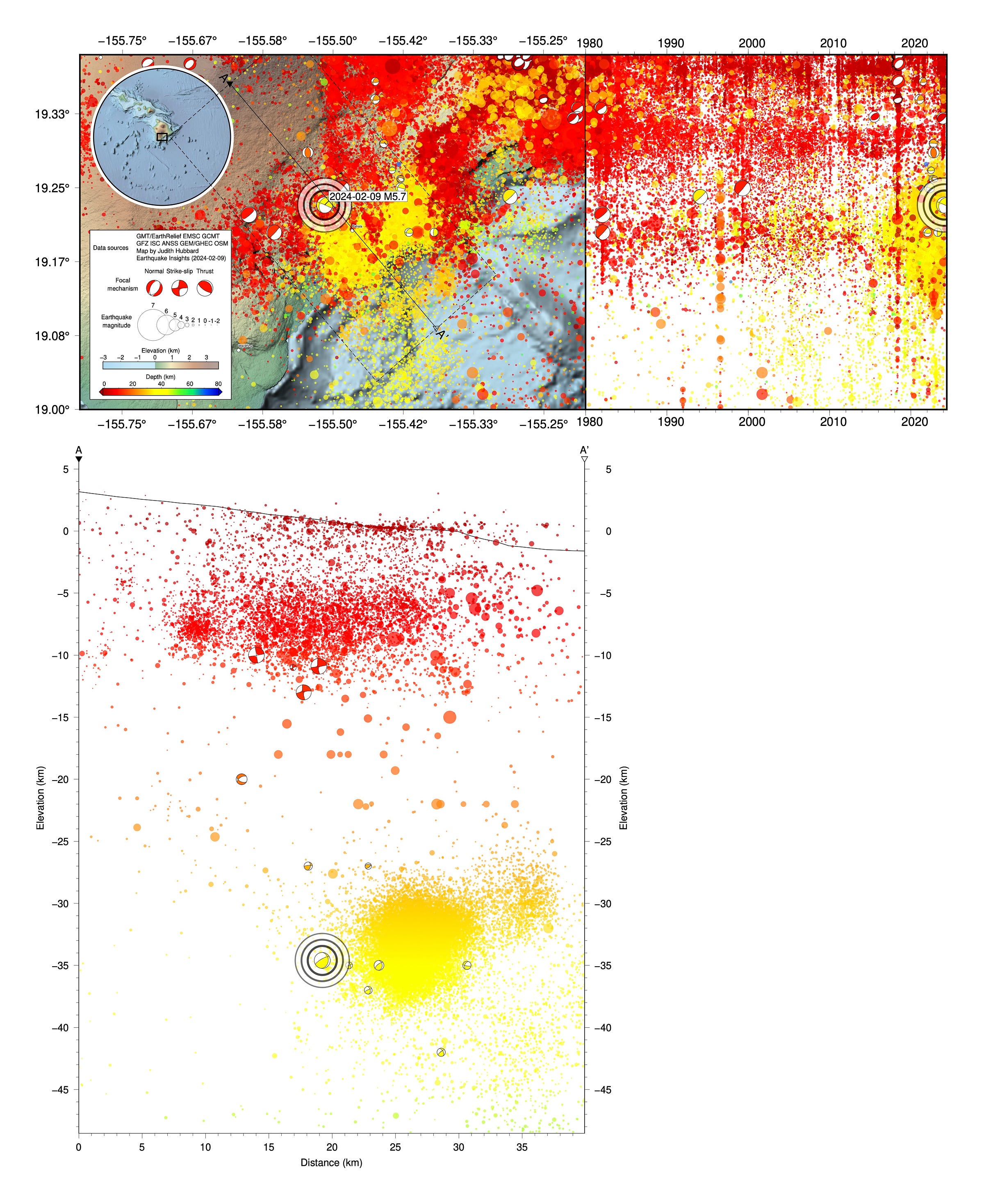










That 3D model is fabulous - but... at that depth, the rock is all plastic... and probably fairly homogenous except for the heat plume itself... presumably... so how do faults persist Pure shear zones filled with magma? does that mean the earthquakes outline the shape of the shear zones around a molten core?